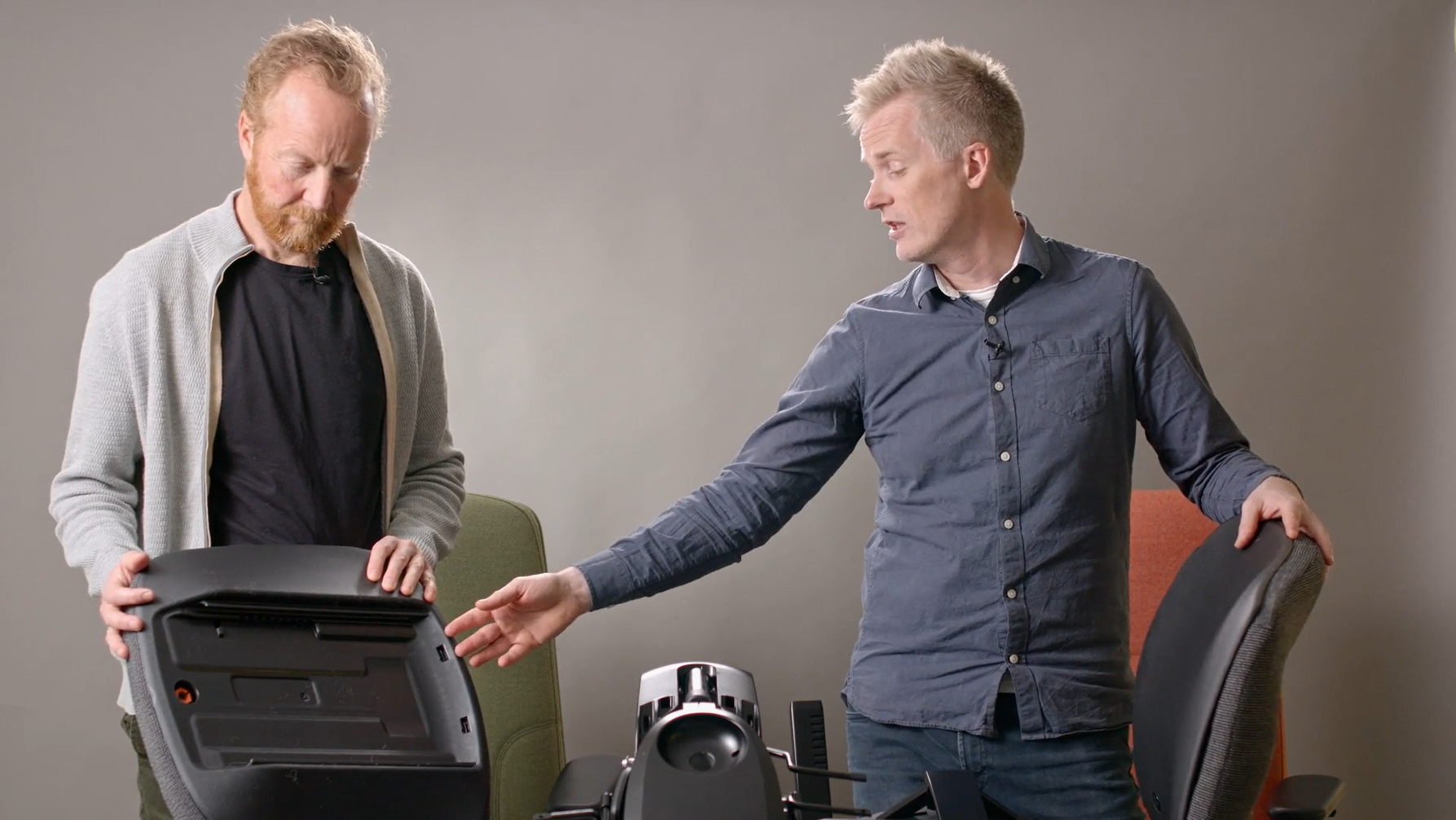RH New Logic – The Environmental goals
Sustainability is a key part of the process when it comes to making furniture at Flokk. Over the years, we have developed our own set of criteria that we see can have the biggest effect on reducing our impact. Using these sustainable design principles as a starting point, the RH Logic team pinpointed two key aspects that would significantly improve the RH Logic’s environmental performance: Using as high a level of recycled material content as possible and designing for disassembly and repair.
Increased recycled materials
Recycling used materials requires less energy than creating from fresh. The knock-on effect of less energy-intensive production is a reduction in carbon emissions and pollutants.
The main problem is achieving the same level of quality as with virgin materials. For materials like aluminium, this is not such an issue, but it is more so with plastic.
All major components of the RH Logic - including the seat and back shell, foam carriers, neck rests, and armrests - contain Polypropylene plastic (PP). The key benefits of PP is its mouldability, moisture resistance, and crucially in chairs, high flexural strength (being able to bend whilst retaining shape).
Recycled PP is more brittle and prone to breaking, so the components on the new RH Logic needed to be designed specifically to allow for this. Extra levels of intricacy in the structural layout of the Plastic pieces increased its strength, whilst areas more likely to come under stress were thoroughly tested, such as the snap features that fasten the pieces together.
88% of the PP in the new RH Logic 220 is recycled, as well as 98% of the aluminium. Overall, 59% of the RH Logic comprises recycled materials (including packaging), a significant improvement on the original RH Logic (400) which was made from 48% recycled materials.
Read more about the benefits of recycled materials





